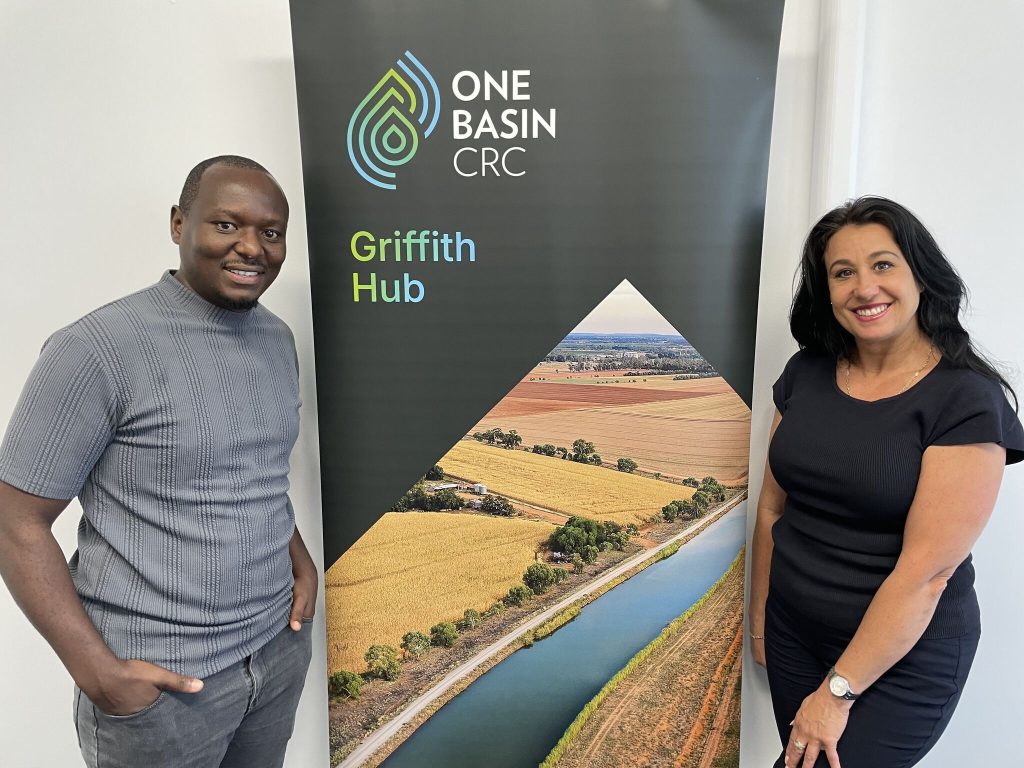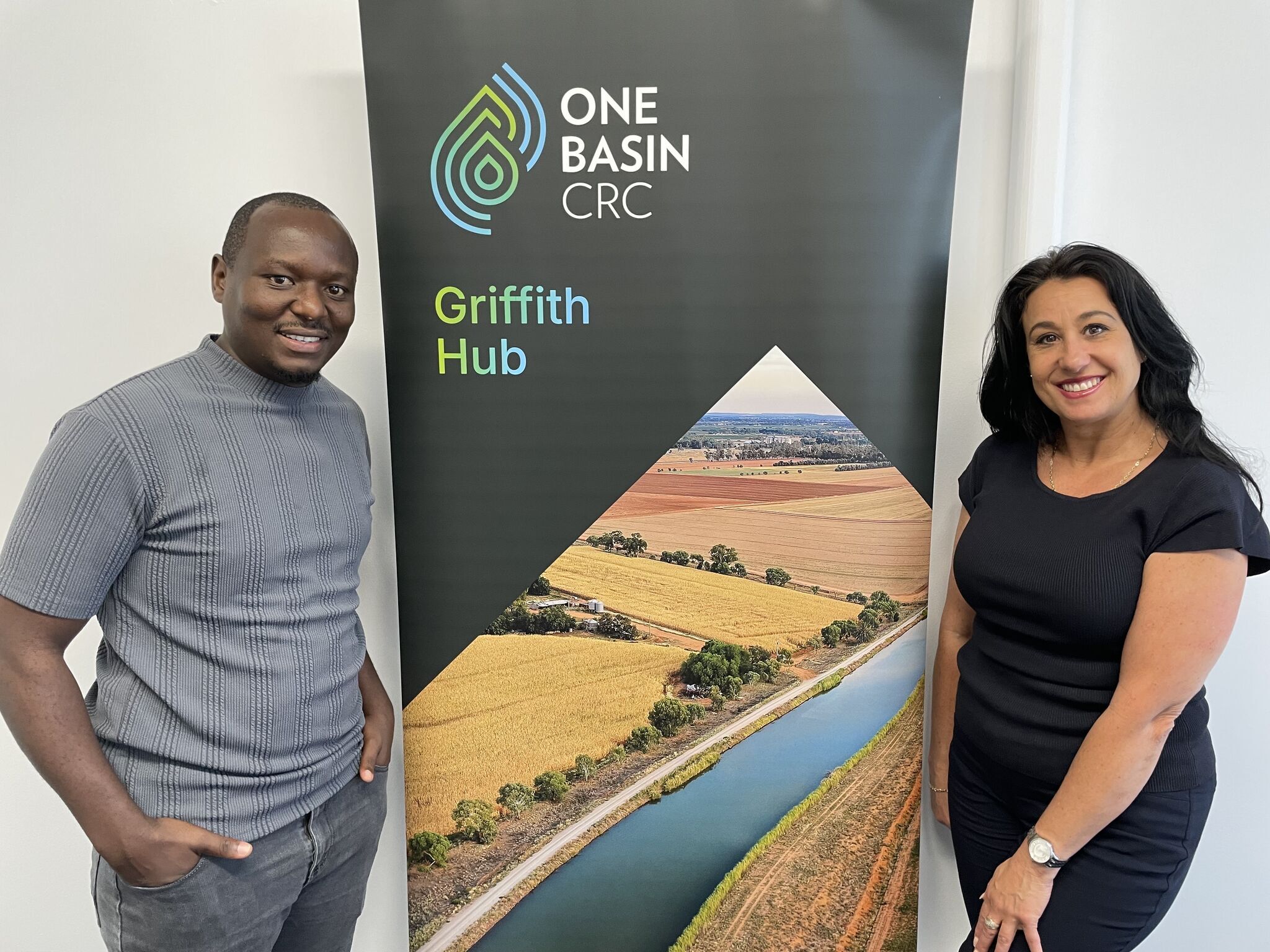Helping Basin communities thrive
news
Published 02 Apr 2025
Written by Katherine Seddon
Across the Murray-Darling Basin, communities are exploring practical ways to address water scarcity challenges. Community Wealth-Building programs are emerging as one promising framework that may help rural communities adapt to limited water availability while maintaining economic resilience.
Changing rural economies
Decreasing water availability in the Murray-Darling Basin is threatening traditional economic models and communities are seeking alternative economic approaches.
Research by Miltone Kimori, a doctoral researcher with One Basin CRC at Charles Sturt University’s Gulbali Institute, suggests that Community Wealth-Building programs offer a practical approach to regional development that focuses on using existing community assets rather than relying primarily on external investment.
Working through the One Basin CRC’s Griffith hub, Kimori’s research examines how Community Wealth-Building programs might best be designed to help Basin communities adapt to reduced water availability. His work investigates the relationships between these programs and various community resources—including natural assets, cultural heritage, social connections, and governance structures.
“Community Wealth-Building represents a paradigm shift, “Kimori explains. “It is about recognising and leveraging the multiple forms of capital within a community – naturally, cultural, social and economic – to create sustainable solutions.”
Anchor institutions leading change
At the forefront of this movement are anchor institutions like the Western Murray Land Improvement Group (WMLIG), organisations deeply rooted in local communities that use their resources to stimulate economic development.
The WMLIG’s initiatives, such as the Murray Industrial Hemp project, demonstrate practical applications of Community Wealth-Building principles by investigating alternative crops like hemp that may use less water while also providing new market options for local producers. According to Kimori’s research framework, effective Community Wealth-Building approaches consider multiple forms of community capital working together.
“What makes these programs successful is their holistic approach,” Kimori says. “They recognise that community wellbeing depends not just on financial capital, but on natural, cultural, social, and built capital working together in harmony.”
“Organisations like Western Murray Land Improvement Group represent crucial anchor institutions in the Murray-Darling Basin’s adaptation journey,” explains Miltone Kimori.
Kimori’s research examines how not-for-profit organisations serve as catalysts for sustainable economic development in water-constrained environments. By documenting WMLIG’s methodologies in facilitating local investment, promoting climate-adaptive agricultural practices, and strengthening community capacity, his work aims to develop an evidence-based framework that can be used by other organisations throughout the Basin.
“What makes Western Murray Land Improvement Group interesting is their integrated approach to community resilience,” Kimori says. “They’re simultaneously addressing ecological sustainability, economic diversification, and community empowerment— which is exactly the multi-dimensional strategy that effective Community Wealth-Building requires.”
The research uses participatory methodologies to document how WMLIG’s initiatives create feedback loops that have local benefits. This is where economic activity generates social and environmental returns that remain within the community rather than flowing outward. This practical application of Community Wealth-Building principles can be used as an example for other Basin communities seeking sustainable development pathways.

Collaborative knowledge networks
Complementing these on-ground initiatives is the work of Associate Professor Tahmid Nayeem, who leads the “Unlocking collaborations for transformation” project for One Basin CRC. This project aims to improve climate adaptation strategies by mapping stakeholder networks and developing platforms for knowledge sharing.
“The challenges facing the Basin cannot be addressed in isolation,” says Dr Nayeem. “An effective adaptation requires collaborative ecosystems that inform better decision-making no doubt.”
This collaborative approach aligns perfectly with Community Wealth-Building principles, which emphasise participation and collective ownership of resources. By involving communities at the design phase, these projects ensure that economic development strategies actually reflect what the local community values and needs.
Social marketing for community engagement
A critical component of successful Community Wealth-Building programs is effective communication and community engagement. Kimori’s research also explores how social marketing strategies can improve program uptake by aligning with local values.
“For these initiatives to succeed, communities need to understand not just what Community Wealth-Building is, but how it benefits them specifically,” Kimori explains. “We’re using participatory action research to develop communication approaches that speak directly to local concerns and aspirations.”
This focus on participatory methods ensures that community voices remain central to the research process. Through workshops, interviews, and collaborative design sessions, researchers and community members co-create solutions tailored to the unique challenges of Basin communities.
Building future resilience
As climate variability affects water availability in the Basin, community-centred approaches like Community Wealth-Building may become increasingly relevant. The One Basin CRC’s Griffith hub serves as a connection point for this work, bringing together researchers, community organisations, and stakeholders to explore sustainable options.
“What we’re ultimately working toward is a future where Basin communities don’t just survive water scarcity but thrive despite it,” says Kimori. “By building on local strengths and fostering collaborative networks, Community Wealth-Building programs offer a promising framework for that future.”
These research projects and community initiatives provide insights not only for the Murray-Darling Basin but potentially for other rural communities facing similar environmental and economic transitions.
Latest news & events
All news & eventsWebinar recording: Working With Country To Heal
Read MoreBuilding capacity for Basin communities to respond to variable water futures
Read MoreDelivering the Commonwealth Environmental Water Holder’s (CEWH) Flow-MER 2025 Annual Forum
Read MoreMurray Darling Association 2025 National Conference: Griffith drives Basin-wide water collaboration
Read More